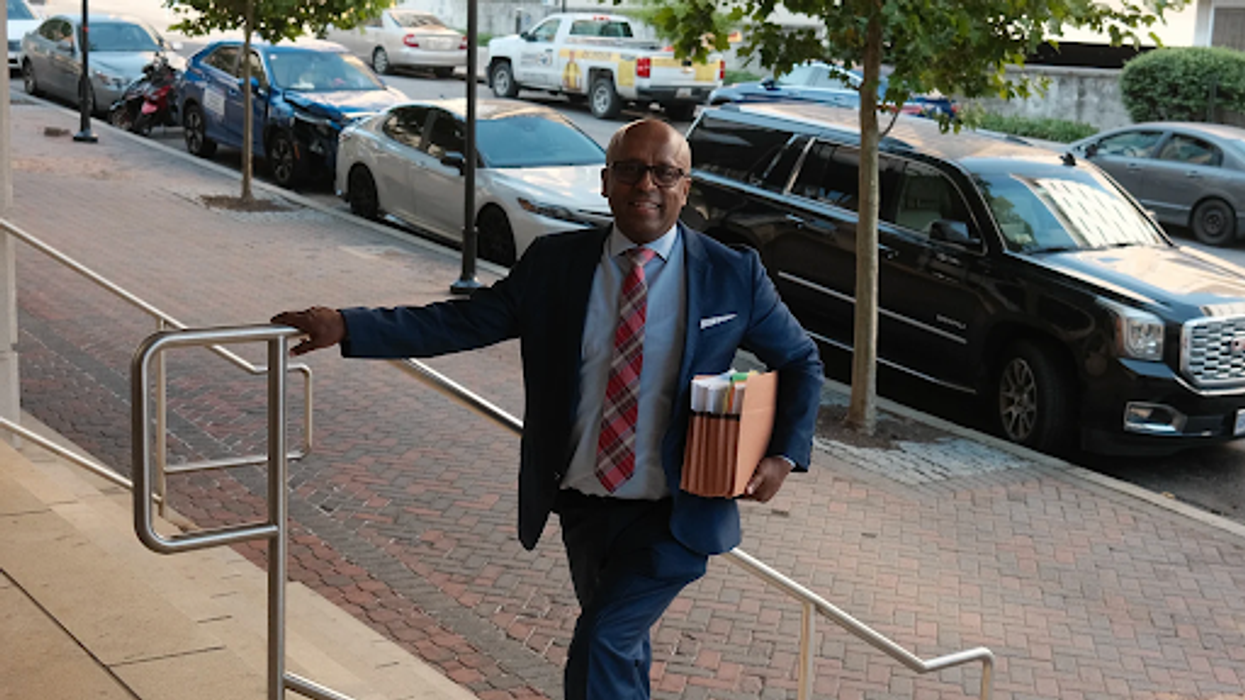Ethiopis is a co-founder of United Stateless, a national organization led by stateless people.
I feel like I have been born again, after a U.S. immigration court made a remarkable ruling in my “statelessness” case in June. I hope that my case will have significant, broader implications for other stateless people in America.
Being stateless means no country will claim you as a citizen. We don't belong anywhere. Stateless people are military veterans. We are Harvard graduates. We are Holocaust survivors. There are millions of stateless people around the world, and 200,000 such people in the United States.
My case is a single example of statelessness in this country, and we now need to see Immigration and Customs Enforcement acknowledge that stateless noncitizens need a specific policy, in line with a recent directive from its boss, Homeland Security Secretary Alejandro Mayorkas. That’s something it has so far been reluctant to do, prompting several prominent members of Congress to write to Mayorkas two days after the ruling came down in my case. In the meantime many stateless people continue to endure sleepless nights and unnecessary suffering as they worry about an ICE officer knocking at their door.
My own case dragged on for more than 20 years. It created more than 1,600 pages of legal documentation. The judge even apologized during my hearing that it had taken so long for me to get the ruling. I’m still having a hard time believing it. The case took a toll on my health. Every time I had a hearing approaching, I would get sick with anxiety. Now that I have some room to breathe, I hope we can clear things up for so many other people in a similar position.
I first wrote about my story a year ago. Until recently I managed eight gas stations in the D.C. area, seven days a week. For more than 20 years I worked 13-hour days and sometimes I’d work 36 hours straight. I was born in Ethiopia, but because my father was born in next-door Eritrea, I was targeted for my ethnicity. Based on my Eritrean blood, the Ethiopians tortured me in prison for three months. When I got out of prison, I fled the country. I've been trying to sort out my legal status since I arrived here in the United States.
In June, I was finally granted asylum after a long legal battle. After years of having argued for my deportation, ICE finally agreed to join me on my motion to reopen a deportation order issued more than 20 years ago. By reopening the case, the Board of Immigration Appeals effectively canceled the deportation order and allowed me to pursue asylum, which will provide the stability I need. The case wound its way back to the lower immigration court and, finally, last month, the immigration judge granted my asylum request.
I hope that ICE will now adopt broader policy reform ensuring more consistent treatment to protect stateless people, as I’m not alone. On June 12 my colleague at United Stateless wrote about another stateless man, Sergei, and his wife, Marina, who came here from the former Soviet Union. They’re still under threat of deportation by ICE, but there is no country that will accept them. Because ICE won't agree to lift that order and has not adopted a policy about statelessness, Sergei and Marina are not covered by new protections for stateless people, introduced last year by U.S. Citizenship and Immigration Services. They’re just two more examples of stateless people living under deportation orders who need to see this change happen.
In December 2021, Mayorkas said the Department of Homeland Security would "enhance protections" for stateless people. And USCIS has since done much to honor that. In October 2023, USCIS amended its policy manual to define statelessness. It now addresses the legal needs of stateless people by allowing USCIS officers to consider statelessness as a factor in decisions. USCIS also considered statelessness in updating processes for H-1B employment visas. And the agency has adopted policies that can assist certain stateless students, for example, by not requiring a waiver to stay in the United States where return to the country of origin is impossible. My colleagues have also engaged with USCIS representatives, who have shown willingness to open dialogue.
ICE, however, has not kept up. The agency has not adopted its own policy on statelessness, or even a legal definition of statelessness. Because of the deportation order, Sergei and Marina are under ICE’s jurisdiction, so they can't get protection under the new USCIS policy change; at least according to both ICE and USCIS interpretation. If ICE had a statelessness policy like USCIS does, or if it agreed to allow USCIS to have jurisdiction over stateless people under orders of deportation, it could allow people like Sergei and Marina access to protections.
If ICE enacts broader policy changes, which I hope it will now do, other stateless people will be able to clear up their status and move on with their lives.
Meanwhile I’m so grateful to my lawyers: David Bennion, executive director of the Free Migration Project, and Michelle Mendez, director of legal resources and training for the National Immigration Project. I’m also very grateful to United Stateless, an organization I co-founded, and to Executive Director Karina Ambartsoumian-Clough, who has been a stalwart advocate for my cause. There are countless others who have kept believing in my case, and in the cause of statelessness. I’m particularly grateful to Sen. Ben Cardin (D-Md.) and Rep. Jamie Raskin (D-Md.) for their reintroduction of the Stateless Protection Act, which would provide a permanent administrative fix for statelessness, so we don’t have to rely on conflicting subagency policies.
I firmly believe that by coming together as stateless people, telling our stories and advocating in our own interests, we have the power to overcome this human rights issue in America and around the world. The resolution of my case should give people hope that more is possible on statelessness, and I am determined to keep fighting for justice for people like me.



















